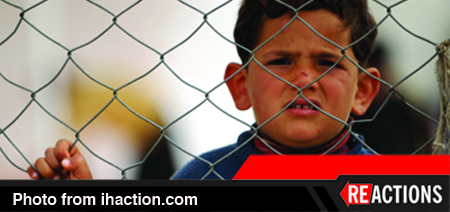As the Syrian battle continues, refugees are paying the biggest price. European nations are slowly beginning to realize that resources must be devoted to the Syrian refugees as their plight worsens. Yusuf Sarfati, an assistant professor in the Department of Politics and Government and the director of the Middle Eastern and South Asian minor program, says hardships are taking their toll on the refugees.
Sarfati:
Entering its fourth year, the battle between the Syrian regime and opposition forces seems to be deadlocked, and there is no end in sight for the civil war in Syria. In this gloomy context, Syrian civilians are paying the heaviest price of the conflict. The UNHCR reports that there are 3.2 million refugees residing in neighboring countries as of June 2014, and this number does not include the millions of internally displaced Syrians. Among those refugees, close to 1.2 million live in Lebanon, over a million live in Turkey, and Jordan hosts over 700,000 refugees.
Increasing numbers of refugees adversely affect the receiving countries. Particularly, smaller countries, like Lebanon and Jordan, experience huge strains on their infrastructures. According to UNHCR statistics, Lebanon has 257 and Jordan has 114 refugees per 1,000 inhabitants (the same figure for the U.K. is 1.5 and the EU average is 2.3). In Lebanon, many justifiably fear that the continued influx of so many newcomers to the tiny country might lead to the collapse of state institutions, which are already weak historically.
In refugee destinations, wages are on the decline and rents are on the rise, paving the way for societal tensions. Some of these reactions turn to anti-Syrian racism in the host societies. For instance in Turkey, which adopted an open door policy for Syrians until very recently and made attempts to strengthen the rights of refugees, xenophobic and racist discourses are becoming widespread. Syrians are represented as criminals, beggars and trouble-makers, particularly in the country’s south and southeast, where they mostly reside. In a few instances, anti-Syrian sentiment turned to violent attacks against the refugees and led to clashes. Partly as a measure to prevent rising tensions, both Turkey and Lebanon recently passed tougher requirements for Syrians to pass their borders. These measures made movement harder for already vulnerable Syrian civilians.
In addition to social challenges, Syrians also face physical and economic hardships in the societies in which they settle. The unusually low temperatures and snow that encapsulated parts of the Middle East this winter hit the refugees, many of whom lack adequate shelter. In the Syrian-Lebanon border, four refugees froze to death. Economic hardship is a significant dimension of refugee life. A recent survey shows that two thirds of the Syrian refugees residing in urban and rural areas across Jordan live below the absolute poverty line, despite attempts of the Jordanian government to provide free welfare services to the refugees.
Europe, on the other hand, is reluctant to share the burden. While many Syrians try to cross the Mediterranean Sea in an attempt to take refuge in Europe – and thousands already died in their endeavors – the European countries turn a blind eye to requests of accepting Syrian refugees. According to UNHCR figures, France hosts 500 Syrian refugees and the U.K. government accepted less than 150. Unless the international community increases the aid provided to refugees in Syria’s neighboring countries, and Western countries allow a substantial number of Syrian refugees in their countries, more difficult days are ahead for the Syrian refugees.

